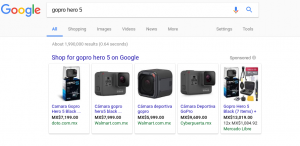Professional development training is a need that’s talked about more often than it happens. Since it’s not usually urgent, when an organization decides to “go for it”, they want something they can rely on. But how does a leader know if their professional development training initiative will make a lasting impression? How will they engage their senior leadership? How will they get the most value for their time and money? The answer is easy: give prospective professional development trainers an outline of what you need.
The training brief: A one-pager that can elevate your professional development from good to great
It’s standard practice in marketing and communications to ask for a brief: a one-page document that covers the highlights of an assignment and gives the context of what is expected and other pertinent information. I think it’s time HR professionals give themselves permission to use this trick (in case they don’t already). Sure, you can go with the flow and offer professional development training based on a discussion. This can work well. But why not expect your professional development provider to really customize the session to what would be most helpful to your organization. Need a little more encouragement? Here are four reasons to embrace the brief.
1. It can double the effectiveness of your training
Every organization is different. Its culture, leaders, communication challenges are all unique. Knowing this intel gives a provider the tools they need to maximize the persuasiveness of their approach. Share highlights of your strategic plan, outline comments you have heard from management, and give the keys to the kingdom on how the professional development training can be the most beneficial. All aspects of your training session, from exercise scenarios to do’s and don’ts, should be tailored to you and your organization. Your session should feel specific to your business because your trainer took the time to make it that way. This will go a long way to boost the engagement and participation of your team.
2. It helps you figure out what you want
A good brief asks thought provoking questions so you can get to the heart of what you really need. Questions could include “How would you know this training was successful?”, “What would a homerun for you look like?” or “Six months from now, you’ll know this training had an impact because….” When I query a client to understand their professional development training needs, it’s common to hear several different ideas which can lead down different paths. Ultimately, there is usually one true goal that comes forward as the most important. If a prospective trainer doesn’t ask these questions (or you are mandated to use pre-existing training modules) completing a brief will be a great way to zoom in on what you want to pursue.
3. It’s a tool to get internal buy-in
It’s with good reason many senior leaders are jaded about corporate training, especially when more important priorities are “on fire”. Some trainers over promise and under deliver. It can be hard for staff to shut off their phones and give their attention. This is where a brief comes in handy. If you think training is needed ask a potential trainer how they work around these challenges. Invite them to help you craft the pitch you will take to your senior leader to get approval. Ask for references to prove they are as awesome as they say they are. Providing this additional detail can help you get buy-in for more professional development training.
4. It separates the good trainers from the great
Any provider you work with should welcome a training brief with open arms. It’s ideal to know exactly how to meet a client’s needs. Too busy to fill out a brief? See if a potential vendor asks you the questions outlined in this article and more. You want to have confidence they are your partner as well as your service provider. If you hear someone say, “I have the perfect thing for you. I used it with a client just last month,” tread lightly. Reusing content makes sense but your training session should be customized to your specific challenge. If you’re not sure exactly what you need, your trainer should be asking you the right questions to help you figure it out. Don’t settle for good when you deserve great.
Your time and money are precious. I hope I have convinced you to embrace the brief and make your trainers work a little harder to earn (and maintain) your business. As an HR professional, it’s important to make sure you’re investing in the rights areas and with the right providers. The next time you decide to start a new professional development training, consider my pro communication tip and create a training brief.
Are you looking for new ways to enhance the employee experience? Access Achievers’ webinar: “Hack HR to Create Best-In-Class Employee Experiences.”
Business & Finance Articles on Business 2 Community
(35)






